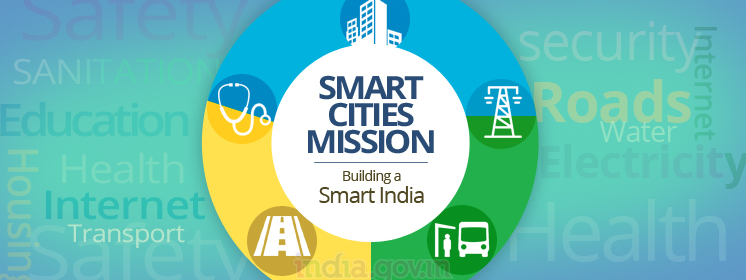Elaborating on the Smart Cities Mission (GS Paper 1, Urbanisation)

Introduction
- The Smart Cities Mission, initiated in 2015, embodies a visionary approach to urban development, aiming to leverage technology and innovation to address the complex challenges faced by India's rapidly growing cities. Here's a more detailed exploration of its components:
Defining Smart Cities:
- The concept of smart cities emerged as a response to the increasing urbanization and the need for sustainable urban development.
- While initially associated with advanced infrastructure and technology integration, the definition has evolved to encompass broader aspects such as inclusivity, sustainability, and citizen-centric governance.
Mission Strategy:
- The mission adopts a multifaceted strategy to transform urban areas, emphasizing both pan-city initiatives and area-based developments.
- By implementing smart solutions across entire cities and focusing on specific zones for comprehensive redevelopment, it seeks to create a holistic urban ecosystem that fosters economic growth and enhances the quality of life for residents.
Core Infrastructure Elements:
- At the heart of the Smart Cities Mission are the core infrastructure elements essential for urban living.
- These include provisions for reliable water supply, electricity, sanitation, efficient public transport, affordable housing, digital connectivity, effective governance mechanisms, environmental sustainability, and ensuring the safety and well-being of citizens.
Financing Mechanism:
- To support the ambitious goals of the mission, a substantial financial commitment has been made by the central and state governments.
- The funding model, operating as a Centrally Sponsored Scheme (CSS), provides significant resources over a five-year period, with matching contributions required from state and urban local bodies.
- This pooling of resources enables the allocation of substantial funds for the development of smart cities across the country.
Concerns/Challenges:
- Despite its noble objectives, the Smart Cities Mission has encountered several challenges during implementation.
- These include issues related to the selection process, governance structures, displacement of marginalized communities, and unintended consequences such as urban flooding.
- Additionally, concerns have been raised regarding the exclusionary nature of the scheme and the need for greater citizen participation in decision-making processes.
Way Forward:
- Addressing these challenges requires a nuanced approach that integrates data-driven decision-making, inclusive urban planning, and effective governance mechanisms.
- The mission must evolve to incorporate feedback from stakeholders, prioritize community engagement, and adopt sustainable development practices.
- Moreover, there is a need for smart leadership at all levels of government to drive the mission forward and ensure its success in transforming India's urban landscape.
Conclusion
- In essence, the Smart Cities Mission represents a bold step towards reimagining urban spaces and creating cities that are not only technologically advanced but also inclusive, sustainable, and responsive to the needs of all citizens.
- By addressing challenges and embracing innovative solutions, it has the potential to redefine urban development paradigms and pave the way for a more equitable and prosperous future.


